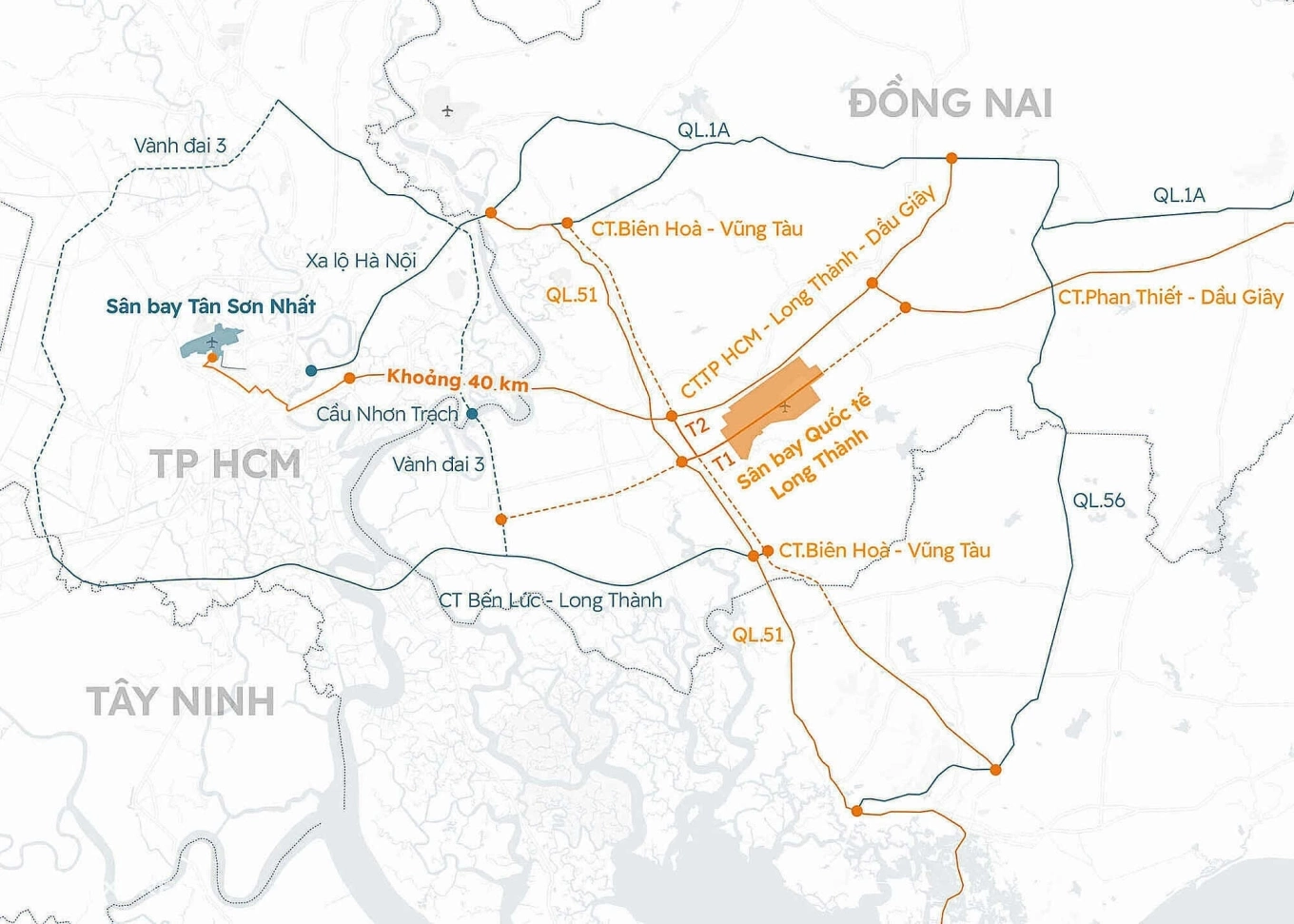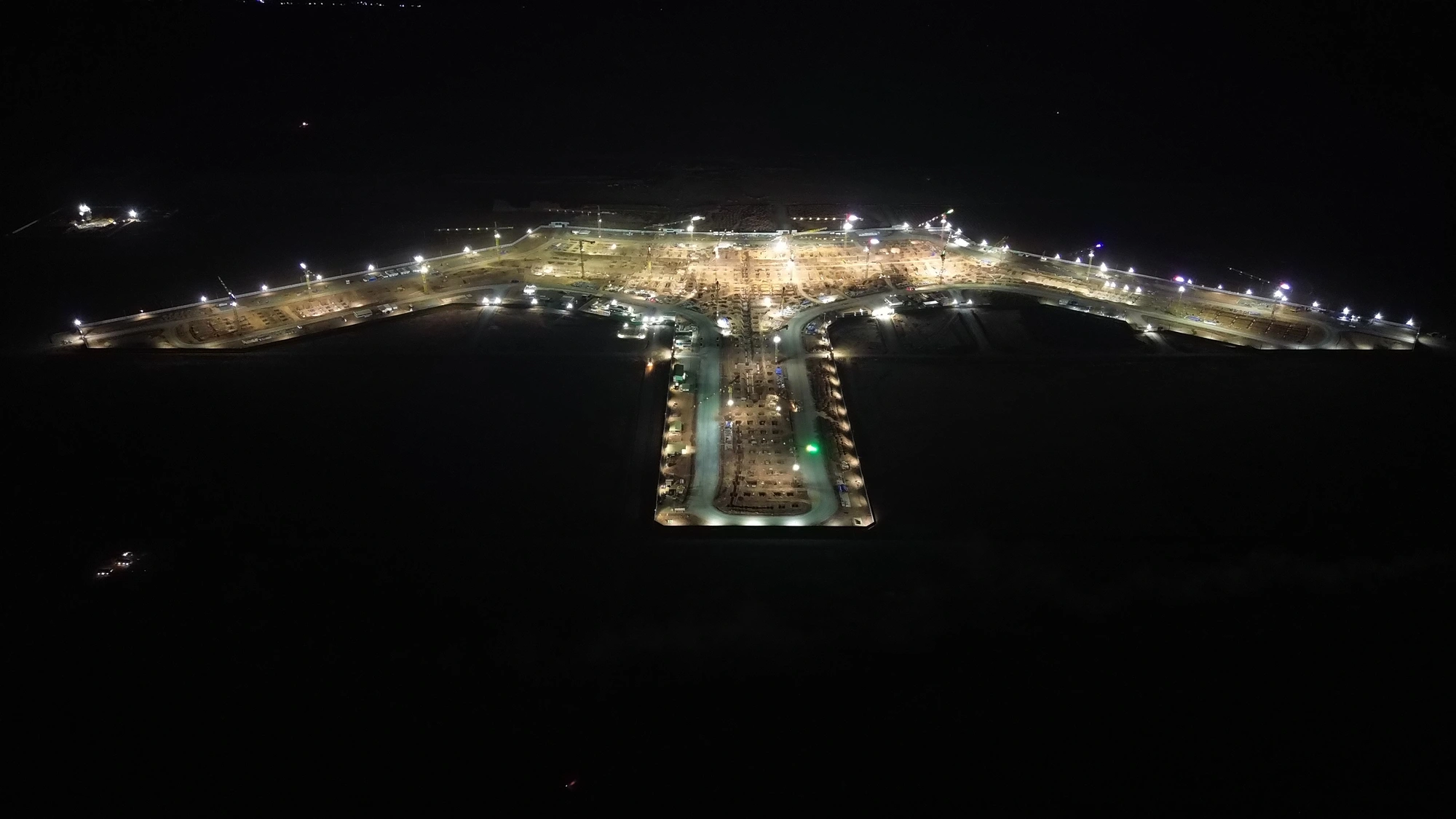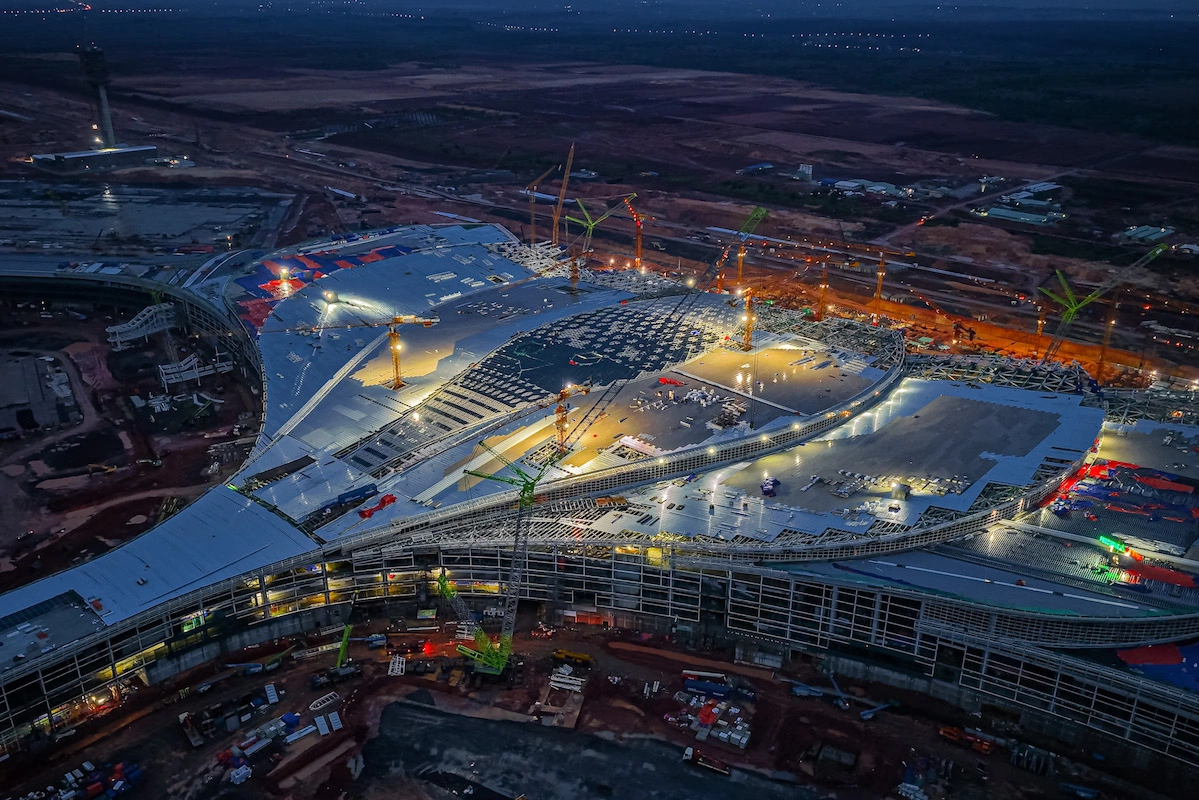
Long Thanh International Airport, Vietnam’s key national infrastructure project, is drawing attention as it aims to become a leading aviation hub in Southeast Asia. With its modern design and grand scale, Long Thanh not only alleviates pressure on Tan Son Nhat Airport but also promises to boost the economy and elevate Vietnam’s position on the global aviation map.
Located in Long Thanh District, Dong Nai Province, about 40 km from Ho Chi Minh City, the Long Thanh Airport project has a Phase 1 investment of $5.4 billion. Upon completion of all three phases, it will handle 100 million passengers and 5 million tons of cargo annually, competing with major airports like Changi (Singapore) and Suvarnabhumi (Thailand). The passenger terminal, inspired by the lotus flower, will span 376,451 m² with 40 aircraft parking positions.

As of September 2025, the project is progressing rapidly to meet deadlines. Runway No. 1 and the air traffic control tower are set to be completed by April 2025, three months ahead of schedule. The passenger terminal, the project’s “heart,” has completed its foundation and is accelerating roof construction, aiming for completion by December 31, 2025. Connecting roads T1 and T2 are 76% complete, expected to be operational by April and July 2025. Nearly 14,000 engineers and workers, along with 3,000 machines, are working tirelessly to ensure commercial operations begin in June 2026.

However, challenges remain. Connecting infrastructure, such as the Ben Luc-Long Thanh Expressway and Cat Lai Bridge, is not yet fully synchronized, raising concerns about congestion when the airport opens. Shortages of construction materials and bidding difficulties are also significant hurdles. Additionally, land clearance and resettlement need acceleration to meet project timelines. Beyond infrastructure, Long Thanh Airport is a catalyst for economic growth, expected to contribute 0.98% to GDP by 2030 and create 200,000 jobs. Designed as a modern “Airport City” with a free trade zone and advanced aviation services, it incorporates 4.0 technology and green design, promising to be a symbol of sustainable development.

With its scale and strategic vision, Long Thanh International Airport will not only resolve Tan Son Nhat’s overload but also position Vietnam as a leading aviation transit hub. It reflects Vietnam’s ambition to excel in global aviation and economics. Coordinated efforts in infrastructure and construction are crucial to realizing this potential. When operational in 2026, Long Thanh will be a gateway connecting Vietnam to the world and a source of national pride.
